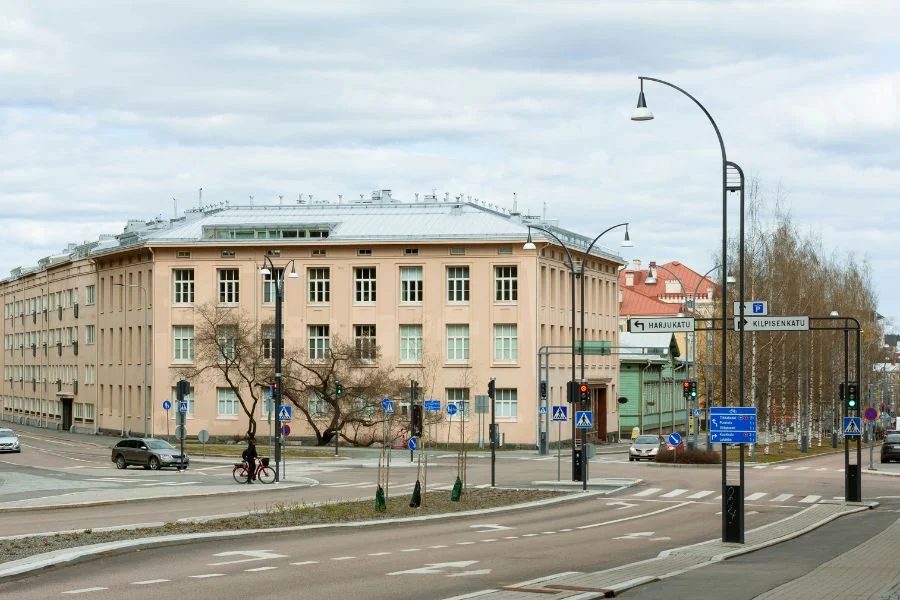Finland is often ranked among the world’s happiest nations, and it’s not just because of its stunning lakes and northern lights. The country’s well-organized immigration system makes it a reliable destination for skilled professionals looking to build a long-term future in Europe. For many foreign workers, a Finnish work visa can be the first step toward permanent residency and eventually, even citizenship. But how does the process really work, and who qualifies? Let’s explore how Finland’s work visa can lead to a stable life in the north.
Key Takeaways
Understanding Finland’s Work Visa System
Finland doesn’t technically issue something called a “work visa.” Instead, it offers a residence permit for employment, which allows foreigners to live and work in the country legally. These permits are usually issued for one to two years and can be renewed as long as the job continues.
The most common type is the Residence Permit for an Employed Person (TTOL), designed for individuals with a valid job offer from a Finnish employer. Others include residence permits for specialists, researchers, entrepreneurs, and those working in seasonal or startup roles. While each category has its own criteria, they all share one thing in common: a potential path to permanent residency after a few years of continuous residence.
Eligibility Requirements for a Work-Based Residence Permit
To qualify for a Finnish work-based residence permit, an applicant generally needs to meet several key conditions. The first is a valid employment contract from a Finnish-registered employer. The job offer must comply with Finnish labor laws, including fair pay and working conditions.
Also Read: How to Get Permanent Residency in Finland
Applicants must also show that they have sufficient means to support themselves, as Finland doesn’t allow residence permits for jobs that pay below the national threshold. Other factors, such as a clean criminal record and relevant qualifications, play a role as well.
If applying for a specialist or researcher permit, higher education credentials or a confirmed role in a Finnish institution may be required. Once the application is submitted, the Finnish Immigration Service (Migri) reviews it in consultation with the Employment and Economic Development Office.
Pathway from a Work Visa to Permanent Residency
A foreign national can apply for permanent residency in Finland after four years of continuous residence under a valid residence permit. The keyword here is “continuous.” This means the applicant must have held an A-type residence permit, which allows long-term residence, rather than a temporary or seasonal permit.
During these four years, the applicant must have lived in Finland without major interruptions. Short vacations abroad are fine, but long absences can reset the residency clock. If the applicant has changed employers, the residence permit must have remained valid and renewed on time.

After the four-year mark, they can apply for a Permanent Residence Permit, also known as a P Permit. This permit removes the need for renewal and grants nearly all the rights enjoyed by Finnish citizens, including access to social benefits and easier travel within the EU.
How to Apply for Permanent Residence
Once eligible, applicants can apply for permanent residence through the Finnish Immigration Service (Migri), either online via the Enter Finland portal or at a local service point. The application process requires proof of continued residence, a valid passport, evidence of employment or financial stability, and documentation showing compliance with Finnish law.
Migri typically reviews applications within a few months, depending on volume and case complexity. If approved, the applicant receives a P Permit card, valid indefinitely. This is often the final step before pursuing Finnish citizenship, which requires five years of residence and integration, including basic Finnish or Swedish language skills.
Challenges and Common Mistakes
Many applicants underestimate how strictly Finland enforces the “continuous residence” rule. Gaps in employment or expired permits can interrupt the four years, delaying eligibility for permanent residence. Similarly, switching from one visa type to another without updating one’s status with Migri can cause administrative issues.
Another common mistake is failing to maintain sufficient income throughout the residence period. Finland’s immigration officials regularly check that the applicant can support themselves and hasn’t relied on social assistance. Staying compliant with all legal and financial requirements is essential for a successful transition to PR status.
Also Read: Are You Eligible to Work in Finland’s In-Demand Jobs?
Benefits of Becoming a Permanent Resident in Finland
Achieving permanent residency in Finland is not just about security; it’s about belonging. PR holders enjoy the freedom to work for any employer, access to social benefits, and eligibility for student financial aid. They also gain visa-free movement across the Schengen Area and can apply for Finnish citizenship after meeting integration and language requirements.
Finland’s strong healthcare system, transparent governance, and balanced work-life culture make it one of the most desirable destinations for skilled migrants looking to build a stable life in Europe.
Conclusion
Getting permanent residency in Finland through a work visa is a structured but achievable journey. It requires consistent employment, compliance with local laws, and a four-year commitment to living in the country. For those who meet these standards, Finland offers not just a new home but a lifestyle rooted in equality, safety, and opportunity.
In short, Finland rewards those who integrate, contribute, and stay, making it one of the most straightforward and worthwhile permanent residency pathways in Northern Europe.





